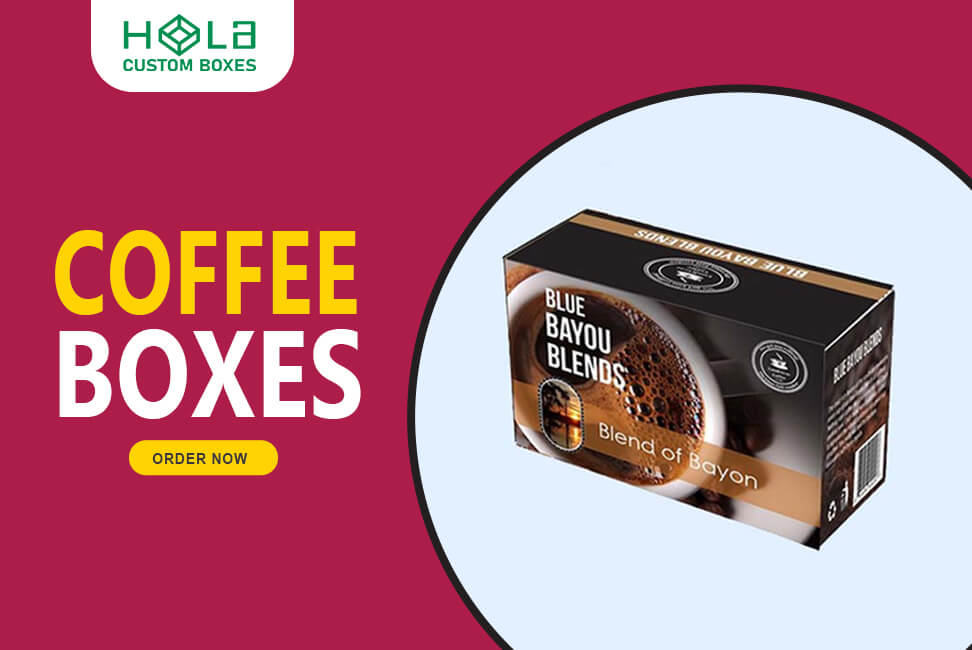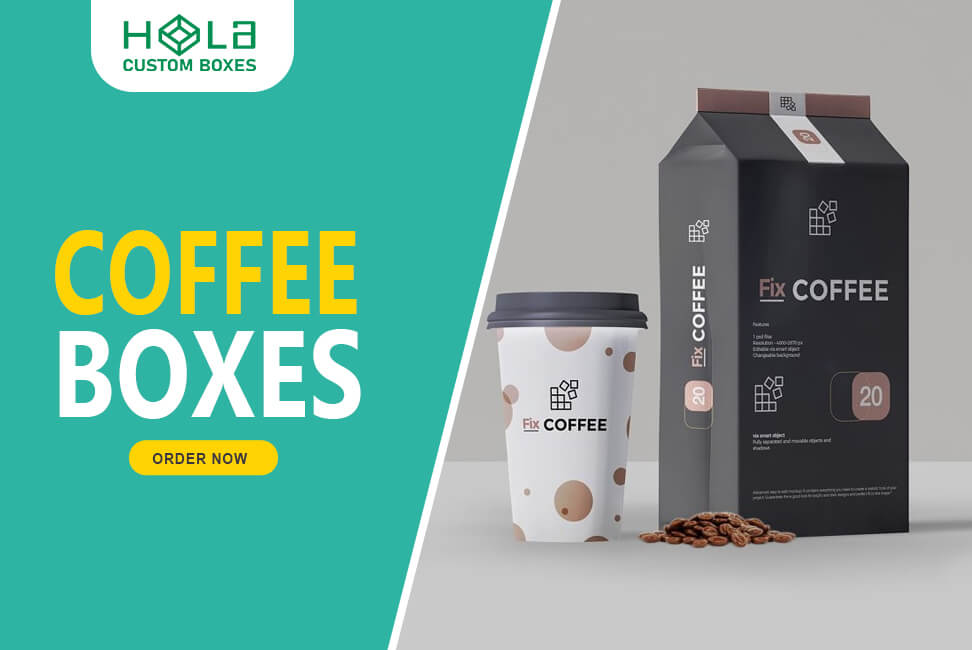The Impact Of Coffee Box Wholesale Prices On Your Bottom Line
2026-01-02 13:01:15
Do you love a good cup of coffee? Of course, you do. But as a business owner in the coffee industry, your love for Java must be balanced with the reality of running a profitable enterprise. One crucial factor that can significantly impact your bottom line is the price of coffee box wholesale.
As you know, the cost of goods sold is essential in determining your profit margins. Therefore, it's critical to understand how changes in coffee box wholesale prices can affect your business's financial health.
This article will explore the basics of coffee box wholesale pricing and how it is determined. We'll also discuss strategies for managing costs while ensuring customer satisfaction and maximizing profits.
So grab yourself a cup of joe, and let's dive in!
Buying custom coffee boxes wholesale reduces per-unit cost and increases profit margins for coffee brands.
Key Takeaways
- Wholesale coffee box prices significantly impact a business's financial health.
- Strategies for managing wholesale costs and maximizing revenue include inventory management, marketing tactics, offering unique products or services, and negotiating with coffee suppliers.
- Maintaining customer satisfaction while managing costs involves offering high-quality coffee at competitive prices, providing value-added services, and investing in technology, such as an inventory management system.
- Sustainable sourcing can increase coffee box wholesale prices and be a selling point for businesses that value sustainability.
The Basics of Coffee Box Wholesale Prices
If you're wondering how coffee box wholesale prices can affect your business, let's start by exploring the basics! Coffee box packaging refers to the cardboard boxes used to transport and store coffee beans. These boxes are a crucial component of the supply chain, as they protect the beans from moisture, light, and other environmental factors that could compromise their quality.
When it comes to coffee box wholesale prices, several factors come into play. One of the most significant is sustainable sourcing. As consumers become more environmentally conscious, demand for sustainably sourced coffee beans and packaging materials has grown. This has led many suppliers to increase their prices to cover the higher costs of sustainable sourcing. However, investing in these eco-friendly options can also be a selling point for your business and attract customers who value sustainability.
Tracking Market Demand for Smarter Pricing
Staying ahead in the coffee box wholesale industry requires close monitoring of market demand and consumer behavior. When demand for specific coffee flavors or product types rises, suppliers often respond by raising prices due to limited supply. Conversely, if a product underperforms in the market, suppliers may lower prices to stimulate interest and boost sales. Being aware of these shifts enables your business to anticipate changes and prepare strategic pricing adjustments.
Retail sellers can also use coffee display boxes for better in-store merchandising.
Staying Competitive Through Pricing Analysis

Market competition is another key factor influencing pricing trends. With numerous suppliers offering similar products, buyers naturally gravitate toward the most cost-effective option. To maintain an edge, it's essential to research your competitors' pricing structures and align your strategy accordingly. Understanding both demand and competitive pricing not only helps you stay relevant but also positions your brand for long-term profitability in the wholesale coffee packaging market.
Factors That Affect Coffee Box Wholesale Prices
One great way to understand the factors that can affect how much you pay for your coffee boxes in bulk is to take a closer look at market trends and consumer behavior. However, other factors can also impact wholesale prices.
For example, roasting techniques play a significant role in determining coffee bean prices. Different roasting methods yield distinct flavors and aromas, which may be more or less desirable depending on consumer preferences.
Another factor to consider when looking at wholesale prices is the global supply chain. Coffee is grown in many countries worldwide, and changes in weather conditions or political instability can disrupt the supply chain and drive up prices.
Additionally, transportation costs, tariffs, and currency exchange rates all contribute to the final price of coffee boxes. Understanding these various factors can help you make informed decisions about purchasing coffee boxes in bulk and ultimately impact your bottom line.
Eco-friendly coffee packaging is available via our sustainable packaging category.
Calculating the Impact of Wholesale Prices on Your Bottom Line
Calculating the profit your business can make from purchasing coffee boxes in bulk depends heavily on understanding the factors that influence the final cost. Once you have a clear understanding of these factors, you can conduct a thorough cost analysis and develop pricing strategies to maximize your profits.
To calculate the impact of wholesale prices on your bottom line, follow these steps:
- Determine the total amount of coffee boxes you plan to purchase in bulk.
- Calculate the total cost of those coffee boxes at their wholesale price.
- Add any additional costs, such as shipping or handling fees.
- Divide the total cost by the cups of coffee each box produces to determine your per-cup cost.
By taking these steps, you'll determine the cost to produce each cup of coffee for your business. This is crucial when creating pricing strategies that help maximize profits while remaining competitive in the market.
Strategies for Managing Wholesale Prices and Maximizing Profits
To maximize profit, it's essential to implement effective strategies to manage wholesale costs and maximize revenue.
One key strategy is inventory management. By tracking inventory, businesses can identify which products are selling well and adjust their orders accordingly. This helps prevent overstocking and waste, while ensuring that there is always enough product to meet demand.
Another critical strategy is utilizing marketing tactics to increase sales. Promotions and discounts can help attract new customers and encourage repeat business, while targeted advertising can reach a wider audience and drive traffic to the website or physical store location.
In addition, offering unique products or services that differentiate the business from competitors can help build customer loyalty and increase overall revenue.
By combining these strategies with effective management of wholesale prices, businesses can maximize profits and grow successfully.
Reliable wholesale coffee packaging supply is offered by Hola Custom Boxes.
Negotiating with Coffee Suppliers for Better Prices
When you're in the market for better prices from your coffee suppliers, navigating a sea of options with no compass is like navigating a sea of possibilities. However, negotiating is an essential skill when dealing with wholesale prices. Here are some tips on how to negotiate with your coffee suppliers:
Build strong supplier relationships: A good relationship with your supplier can go a long way in negotiations. They may be more willing to work with you if they know and trust you.
Plan for the long term: Negotiating shouldn't just be about getting a lower price right now; it should also be about building a sustainable partnership that benefits both parties in the long run.
Be willing to compromise: Negotiations are all about give and take. If your supplier wants to work with you on pricing, you may need to give up something in return, such as larger order quantities or longer lead times.
By following these tips, you'll be better equipped to negotiate lower prices and build stronger partnerships with your coffee suppliers. Remember that negotiation is an ongoing process, so keep working at it, and don't be afraid to revisit conversations as your business needs change over time.
Keeping Your Customers Satisfied While Managing Costs
Maintaining customer satisfaction while managing costs can be tricky for any business owner. As a coffee box wholesale supplier, you must keep your customers happy while optimizing costs to ensure profitability.
One key strategy is to offer high-quality coffee at competitive prices. You may consider sourcing beans from different regions or partnering with local roasters to offer unique blends that appeal to your customers.
Another way to maintain customer retention and optimize costs is to offer value-added services, such as customized packaging or free shipping for bulk orders. This adds value for customers and helps you save on shipping costs by consolidating orders.
Investing in technology, such as an inventory management system, can help you track demand and minimize waste, reducing unnecessary expenses without compromising quality.
By finding the right balance between cost optimization and customer satisfaction, you can build a loyal customer base that will support your business for years to come.
FAQs
Q1: How does wholesale pricing benefit coffee brands?
A: It lowers per-unit cost, increases margins, and ensures consistent supply.
Q2: Can wholesale coffee boxes still be fully customized?
A: Yes — wholesale orders still allow custom sizes, finishes, and printing.
Q3: Are eco-friendly coffee boxes available in bulk?
A: Yes, kraft and recyclable options are offered at wholesale pricing.
Q4: Do wholesale orders support multiple flavors/SKUs?
A: Yes — multiple designs can be included in one production run.
